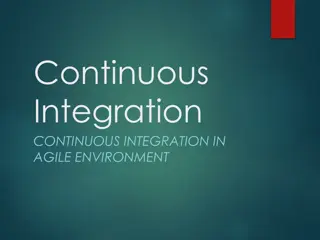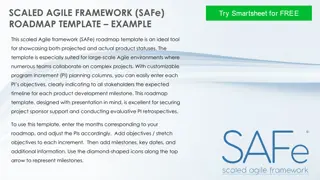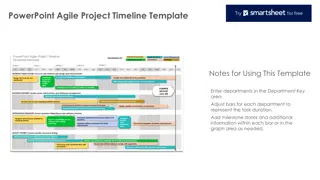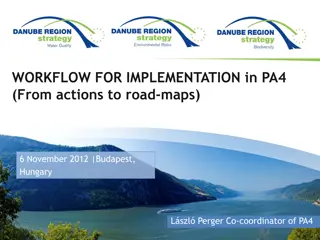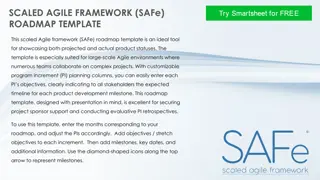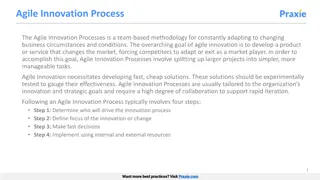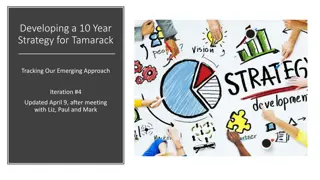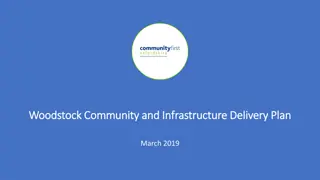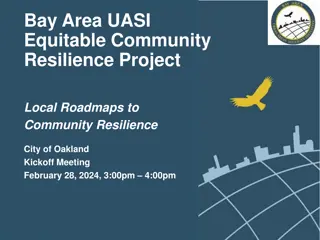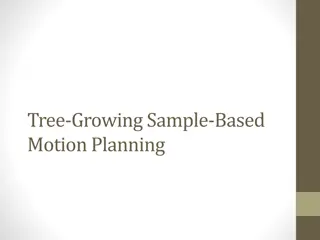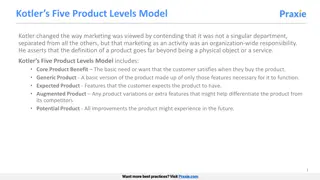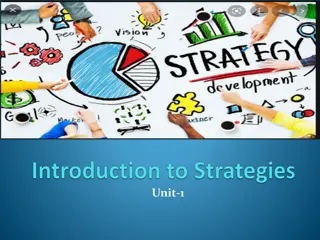
The Impact of Agile Product Development on Product Roadmaps and Strategy
Agile product development is an iterative approach that focuses on delivering small, functional parts of a product in cycles known as sprints.
Download Presentation

Please find below an Image/Link to download the presentation.
The content on the website is provided AS IS for your information and personal use only. It may not be sold, licensed, or shared on other websites without obtaining consent from the author. Download presentation by click this link. If you encounter any issues during the download, it is possible that the publisher has removed the file from their server.
E N D
Presentation Transcript
The Impact of Agile Product Development on Product Roadmaps and Strategy Agile product development has gained significant momentum in recent years, shifting how businesses approach product planning and execution. One of the most notable areas where Agile has made an impact is on product roadmaps and strategy. Traditional, rigid roadmaps are giving way to more flexible, adaptive planning methods that align with the fast-paced, customer-driven nature of today s markets. This blog explores how Agile influences product roadmaps and strategy, enabling businesses to stay competitive and responsive to change. What is Agile Product Development? Agile product development is an iterative approach that focuses on delivering small, functional parts of a product in cycles known as sprints. Unlike the traditional "waterfall" method, where all the planning and design happen upfront, Agile emphasizes continuous development, feedback, and adjustment. Teams are encouraged to be flexible and responsive to customer needs, ensuring that the product evolves over time based on real-world inputs. How Agile Changes Product Roadmaps A product roadmap is a strategic document outlining the future development of a product over time. Traditionally, roadmaps were often static, multi-year plans outlining long-term goals, features, and timelines. However, these static roadmaps don't always work well in today s dynamic business environment, where customer demands and market conditions can shift rapidly. Here s how Agile is transforming product roadmaps: 1. Emphasis on Flexibility Over Fixed Timelines In the Agile framework, roadmaps are not rigid, long-term documents but rather living, evolving tools. With Agile, product roadmaps are designed to be flexible, allowing for changes based on customer feedback, market conditions, or new business priorities. Rather than committing to features and timelines months or years in advance, Agile teams focus on short-term objectives, with the ability to adjust course as necessary. For example, a company might initially prioritize certain features but shift focus when feedback indicates a more pressing customer need. Agile roadmaps allow for these pivots without upending the entire strategy. 2. Incremental and Iterative Development Agile product development encourages incremental progress, where features are developed, tested, and released in small chunks. This incremental approach is reflected in the product roadmap, which focuses on short-term goals rather than long-term commitments. Roadmaps are broken down into smaller, manageable pieces, and the team continuously revisits them based on each sprint's outcomes. This iterative process ensures that each phase of development delivers value, and the product evolves with market demands, rather than sticking to a pre-defined course that might become irrelevant over time. 3. Prioritizing Customer Feedback
One of the most significant shifts in product roadmaps influenced by Agile is the integration of customer feedback into the development process. In Agile, customer feedback is not something that happens at the end of development; it s a continuous part of the process. Roadmaps are updated regularly to reflect the insights gained from user interactions, ensuring that the product evolves in alignment with what customers actually need and value. This user-centered focus is a stark contrast to traditional roadmaps, which often relied on assumptions or forecasts rather than real-time data from customers. 4. Alignment with Business Strategy Agile roadmaps remain tightly aligned with overall business strategy, but they offer greater flexibility in achieving those goals. Instead of planning out every detail years in advance, Agile allows businesses to set broad objectives and then use the roadmap to adapt strategies based on changing circumstances. For instance, a product strategy may focus on entering a new market, and the roadmap would outline a flexible approach that adjusts as customer feedback and market trends are considered. Strategic Benefits of Agile Roadmaps Adopting Agile in product development roadmaps offers a range of strategic advantages: Faster Time-to-Market: By focusing on incremental releases, Agile roadmaps allow businesses to deliver value to customers more quickly. Improved Risk Management: Continuous feedback and iterative development reduce the risk of building features that aren t aligned with customer needs. Greater Market Responsiveness: Agile roadmaps enable teams to adjust to market changes or emerging trends without overhauling the entire strategy. Enhanced Collaboration: Agile emphasizes teamwork and cross-functional collaboration, ensuring that every department is aligned with the evolving roadmap and strategy. Conclusion Agile product development has transformed how businesses approach product roadmaps and strategy by making them more adaptive, customer-focused, and responsive to change. Traditional long-term roadmaps that lock companies into rigid plans are giving way to flexible, iterative approaches that emphasize continuous learning and improvement. In 2024 and beyond, Agile roadmaps will continue to play a crucial role in helping businesses remain competitive, innovate faster, and deliver products that truly meet customer needs. Read development.html More: https://techhorizonsolutions.blogspot.com/2024/09/the-impact-of-agile-product-







